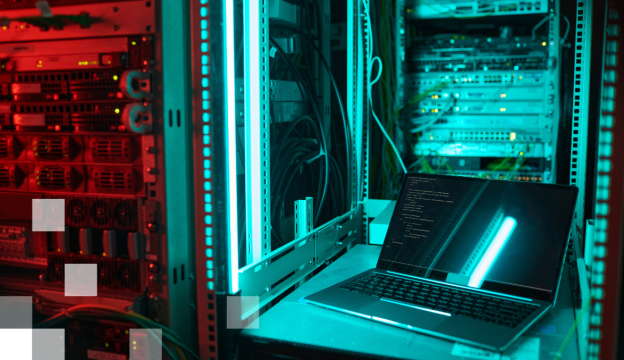Administering Microsoft Configuration Manager
In this five-day course, you will learn how to use Configuration Manager and related systems to manage network resources, how to perform day-to-day management tasks, manage applications, client computer performance, equipment and software inventory, operating system implementation and software usage. There will also be an opportunity to learn how to protect customers from unwanted software, manage and create management queries and reports.
Although this course and the hands-on exercises are designed for Microsoft Configuration Manager and Windows 11 products, the knowledge and skills gained will also be useful for working with System Center Configuration Manager and Windows 10.
Plans
Contact us
Apply or ask a question!
If you want to apply for the course or ask a question about it, feel free to use this form. |
||||||||||||||||||||||||||||
|
||||||||||||||||||||||||||||
Course target
Provide the knowledge and practical skills required for administrators of Microsoft Endpoint Configuration Manager or Microsoft System Center Configuration Manager.
Audience
IT specialists whose tasks are related to the centralized computer management of the organization’s users with the help of MECM or SCCM – inventory of devices and applications, distribution of applications and innovations, implementation of the operating system, compliance management and the use and improvement of reports.
At course completion you will be able to
- Describe the features Configuration Manager and Intune include, and explain how you can use these features to manage PCs and mobile devices in an enterprise environment;
- Analyze data by using queries and reports;
- Prepare a management infrastructure, including configuring boundaries, boundary groups, and resource discovery, and integrating mobile-device management with Intune;
- Deploy and manage the Configuration Manager client;
- Configure, manage, and monitor hardware and software inventory, and use Asset Intelligence and software metering;
- Identify and configure the most appropriate method to distribute and manage content used for deployments;
- Distribute, deploy, and monitor applications for managed users and systems;
- Maintain software updates for PCs that Configuration Manager manages;
- Implement Endpoint Protection for managed PCs;
- Manage configuration items, baselines, and profiles to assess and configure compliance settings and data access for users and devices;
- Configure an operating-system deployment strategy by using Configuration Manager;
- Manage and maintain a Configuration Manager site.
Prerequisites
- Networking fundamentals, including common networking protocols, topologies, hardware, media, routing, switching, and addressing;
- Active Directory Domain Services (AD DS) principles and fundamentals of AD DS management;
- Installation, configuration, and troubleshooting for Windows-based personal computers;
- Basic concepts of public key infrastructure (PKI) security;
- Basic understanding of scripting and Windows PowerShell syntax;
- Basic understanding of Windows Server roles and services;
- Basic understanding of the configuration options for iOS and Android Mobile device platforms.
Training materials
Microsoft Learn environment.
Certification Exam
Not intended.
Course outline
1. Managing computers and mobile devices in the enterprise
- Overview of systems management by using enterprise management solutions;
- Overview of the Configuration Manager architecture;
- Overview of the Configuration Manager administrative tools;
- Tools for monitoring and troubleshooting a Configuration Manager site.
2. Analyzing data using queries, reports, and CMPivot
- Introduction to queries;
- Configuring SQL Server Reporting Services;
- Analyzing the real-time state of a device by using CMPivot.
3. Preparing the Configuration Manager management infrastructure
- Configuring site boundaries and boundary groups;
- Configuring resource discovery;
- Organizing resources using device and user collections.
4. Deploying and managing the Configuration Manager client
- Overview of the Configuration Manager client;
- Deploying the Configuration Manager client;
- Configuring and monitoring client status;
- Managing client settings and performing management operations.
5. Managing inventory for PCs and applications
- Overview of inventory collection;
- Configuring hardware and software inventory;
- Managing inventory collection;
- Configuring software metering;
- Configuring and managing Asset Intelligence.
6. Distributing and managing content used for deployments
- Preparing the infrastructure for content management;
- Distributing and managing content on distribution points.
7. Deploying and managing applications
- Overview of application management;
- Creating applications;
- Deploying applications;
- Managing applications;
- Deploying and managing Windows apps.
8. Maintaining software updates for managed PCs
- The software updates process;
- Preparing a Configuration Manager site for software updates;
- Managing software updates;
- Configuring automatic deployment rules;
- Monitoring and troubleshooting software updates;
- Enabling third-party updates.
9. Implementing Defender Protection for managed PCs
- Overview of Endpoint Protection in Configuration Manager;
- Configuring, deploying, and monitoring Endpoint Protection policies;
- Configuring and deploying advanced threat policies.
10. Managing compliance and secure data access
- Overview of Compliance Settings;
- Configuring compliance settings;
- Viewing compliance results;
- Managing resource and data access.
11. Managing operating system deployment
- An overview of operating system deployment;
- Preparing a site for operating system deployment;
- Deploying an operating system;
- Managing Windows as a service.
12. Managing and maintaining a Configuration Manager site
- Configuring role-based administration;
- Configuring Remote Tools;
- Overview of Configuration Manager site maintenance and Management Insights;
- Backing up and recovering a Configuration Manager site;
- Updating the Configuration Manager infrastructure.
13. What’s new in Microsoft Endpoint Configuration Manager
What’s new in Microsoft Endpoint Manager covering each semi annual release.
If you want to get more information about this course, please contact us by phone +371 67505091 or send an e-mail at mrn@bda.lv.





